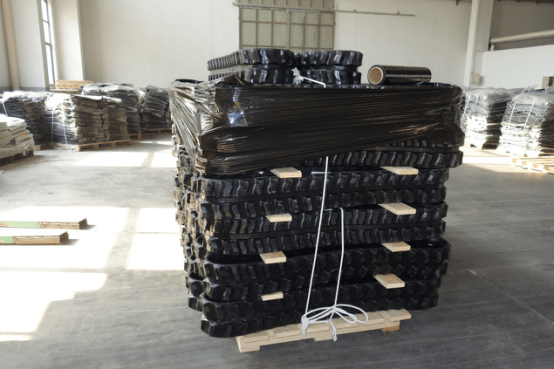Skid steer loaders have become indispensable equipment in the agricultural industry, and their efficiency and versatility are further enhanced by the use of rubber tracks. These rubber tracks for skid steer loaders have played a vital role in the development of agriculture and are expected to continue to shape the direction of future agricultural practices.
The use of skid steer rubber tracks has revolutionized the way agricultural tasks are performed. These tracks provide better traction and flotation, allowing the skid steer loader to traverse a variety of terrains with ease. This is particularly beneficial in agricultural environments where ground conditions are unpredictable, such as fields with soft soil or uneven surfaces. The enhanced traction provided by rubber tracks allows skid steer loaders to operate efficiently in such challenging environments, ultimately increasing productivity and reducing the risk of getting stuck or causing soil compaction.
Additionally, using rubber tracks for skid loader helps minimize soil disturbance. Conventional skid steers can cause soil compaction, which can negatively impact crop growth and soil health. In contrast, rubber tracks distribute the weight of the machine more evenly, reducing ground pressure and minimizing soil compaction. This is particularly important in modern agriculture, where sustainable and environmentally friendly practices are increasingly valued.
In addition to their direct impact on agricultural operations, tracks for skid steer play an important role in shaping the future direction of agricultural practices. As technology continues to advance, there is growing interest in precision agriculture and the adoption of autonomous and robotic farming systems. Rubber tracks are ideally suited for these advancements as they provide the stability and maneuverability required for precise and automated tasks.
Furthermore, the future of agriculture is closely linked to the concept of sustainable intensification, which aims to increase agricultural productivity while minimizing environmental impact. Skid steer rubber tracks fulfill this vision by promoting soil health and reducing the carbon footprint of agricultural machinery. As the agricultural industry continues to grow, demand for efficient and sustainable equipment, such as skid steer loaders with rubber tracks, is expected to increase.
Going forward, developments in skid steer rubber tracks are likely to focus on further improving their durability and performance. Manufacturers are expected to invest in research and development to create tracks that extend service life, improve wear resistance and improve efficiency. Additionally, advances in track design and materials will help reduce maintenance requirements and overall operating costs, making rubber tracks a more attractive option for agricultural businesses.
Additionally, the integration of telematics and digital technologies into skid steer rubber tracks is expected to streamline maintenance processes and provide farmers with valuable data insights. This will enable proactive maintenance planning, real-time performance monitoring and the ability to optimize track usage based on specific field conditions, ultimately maximizing track life and agricultural operation efficiency.
In summary, skid steer rubber tracks play a key role in agricultural development by improving traction, minimizing soil disturbance and promoting sustainable agricultural practices. Going forward, these tracks will continue to shape the direction of agriculture by integrating with the industry’s focus on precision, sustainability and technological advancement. As the agricultural landscape evolves, the importance of skid steer rubber tracks in improving efficiency and environmental management will become even more apparent, cementing its position as a key component of modern agricultural machinery.
Post time: Apr-14-2024

